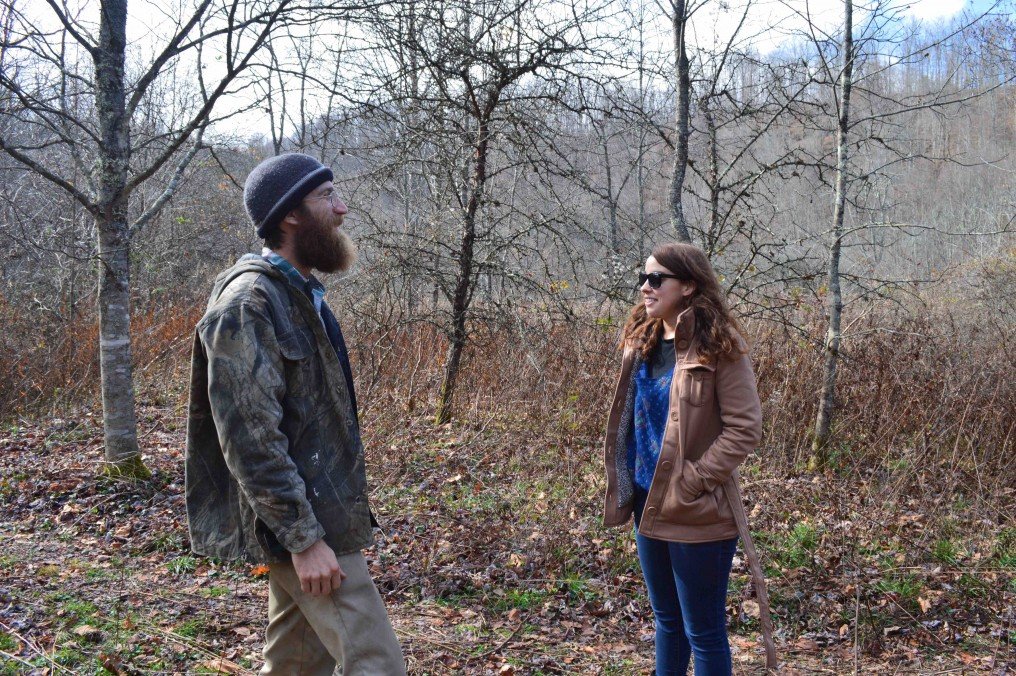Foraging wild-edible plants has long been a part of Appalachian heritage and rural culture. From ramps, fiddleheads and morels in the spring, to chicken of the wood, ginseng and goldenseal in the fall, we are able to wild craft medicine and food from the forests and trails all year round. This instinct to gather is one that has evolved with us andenabled us to become the most dominant species on the planet today; it is in our biology. As the number of people interested in wild crafting and herbal medicine grows, it becomes increasingly important that we keep the longevity of these wild plants in mind.

Shop Local! LDGWV.com
Adam Cate and Amanda Gribble started Lobelia Understory Edibles Ltd. to sustainably produce food from the land and forests in Pocahontas County. They steward their land with an integrated permaculture approach, by looking at the systems that already exist and trying to enhance them. Currently LUE offers a line of three different lacto-ferment vegetables. Amanda apprenticed at Farmstead Ferments in Charlottesville, VA before moving back to West Virginia and starting their sauerkraut operation. “ I have been blownaway” says Amanda, “I never thought people would respond so positively.” She uses WV salt to create a premium raw product and is looking for farmers to partner with to grow the cabbages and other vegetables needed for her ferments. Adam’s primary interests lie in forest grown edibles and his plans include the propagation of shiitake, oysters, and reishi mushrooms, American ginseng, and goldenseal. He is particularly interested in exploring genetic diversity among ginseng plants.

More Local Gift Ideas! FrontPorchWV.com
The United Plant Savers (UPS), an organization dedicated to preserving medicinal herbs and plants for future generations, has created a directory of “At-Risk” and “To Watch” plants (available on their website). For some, the classifications may seem bizarre or even irreverent. For example, here in southeastern West Virginia we have whole mountainsides full of thriving ramp patches, and you might be surprised to learn that ramps are on the “To Watch” list. However, when you consider that ramps grow in a very particular habitat, in a limited part of the world, and they are very difficult to propagate and grow commercially, then you can understand that preserving the habitat for this species is very important. “The best way to harvest ramps to ensure longevity is to cut the tops and leave the roots in the ground,” says Adam, who is concerned about over harvesting of all wild edible and medicinal plants in the area.
Be on the lookout for edible mushrooms and forest medicinal plants from Lobelia Understory Edibles in the future. In the meantime, LUE Old-Time Raw Sauerkraut, Ruby Red Raw Sauerkraut, and Kimchi Kraut are available at retail locations in Lewisburg and Blacksburg. Lobelia Understory Edibles is the Greenbrier Valley Grown Featured Farm for the month of December.
by Kim Forte, Greenbrier Valley Grown Program Coordinator. LBSPY #72, December 2015.
HASHTAGWV ART & ENTERTAINMENT Publisher/Editor-in-Chief, Christina Entenmann-Edwards has been a WV resident since September 2008. She was born and raised in Fairfield County, Connecticut, and is no stranger to hard work and the entrepreneurial spirit. In 2006, she graduated from Quinnipiac University (Hamden, Connecticut), Cum Laude, with a B.A. in History. In 2010, she graduated with an M.B.A. from Liberty University (Lynchburg, Virginia). In February 2012, Christina launched HashtagWV as the area’s first full-color, free arts and entertainment tabloid + online platform. Christina completed the Leadership West Virginia class of 2021, which is an innovative program that grows, engages, and mobilizes leaders to ignite a life passion to move West Virginia forward.
-
Christina Edwardshttps://hashtagwv.com/author/christina/
-
Christina Edwardshttps://hashtagwv.com/author/christina/
-
Christina Edwardshttps://hashtagwv.com/author/christina/
-
Christina Edwardshttps://hashtagwv.com/author/christina/



